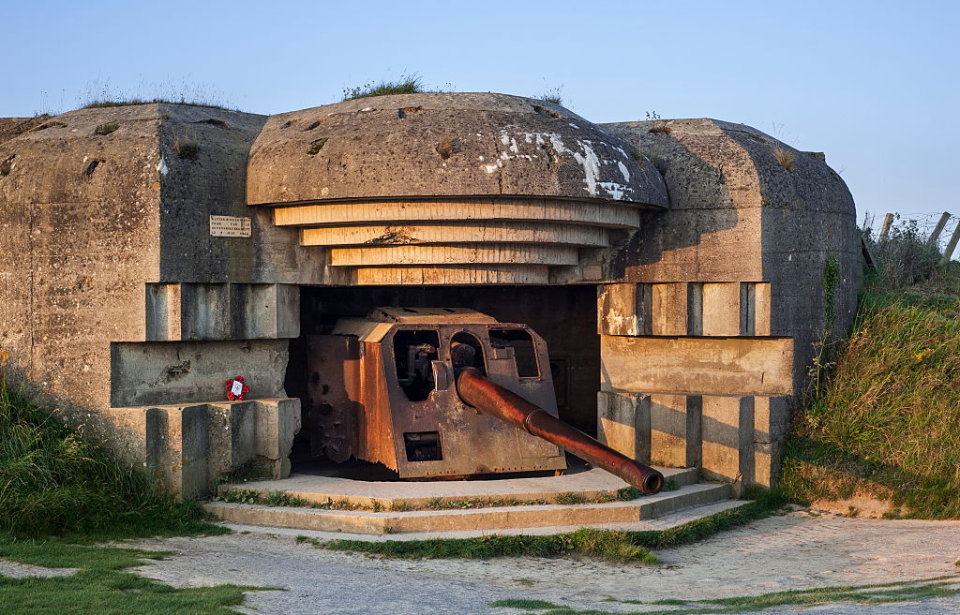A critical moment in the European Theater, D-Day began the Allies’ invasion of German-occupied France through Normandy. The landings unfolded amid intense gun and artillery fire, as the Germans, with a variety of weapons, fiercely defended their positions.
Although D-Day and the Battle of Normandy ultimately ended with the defeat of the German forces, the invasion was a hazardous and fiercely contested endeavor for both sides.
MG 42
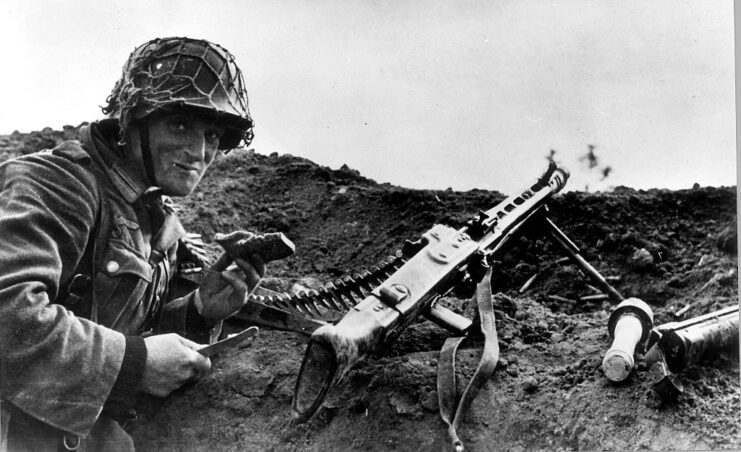
The MG 42, along with its predecessor, the MG 34, stood out as some of the most effective light machine guns employed on the frontlines of World War II. Referred to as the “Buzz Saw,” due to its astonishing firing speed of 1,550 rounds per minute, this weapon found its place in the hands of German forces on D-Day.
By the year 1944, the MG 42 had cultivated a formidable reputation on the battlefield, to the extent that the Allies had developed a deep apprehension about encountering one. Despite the Department of War’s efforts to reassure recruits that the gun’s reputation exceeded “its bite,” these words did little to alleviate the anxiety of those poised to land on Omaha Beach on June 6, 1944.
8.8 cm Flak anti-aircraft gun
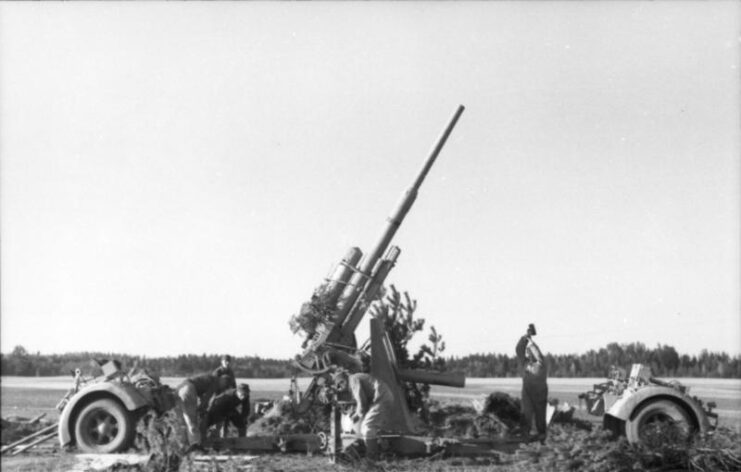
Among the most-used artillery pieces by the Germans during D-Day and the Battle of Normandy, the 8.8 cm Flak anti-aircraft gun was arguably one of the most effective weapons of the Second World War. They were stationed along the Atlantic Wall, and their ability to fire ammunition between three and four times farther than the anti-aircraft weaponry equipped by the Allies made them primary targets on June 6, 1944 and beyond.
Outside of its role as an anti-aircraft weapon, the 8.8 cm Flak was also effective against tanks, especially toward the end of the war. After the conflict, one American serviceman even commented that “an 88 sure makes quick work of them. They go through them just like they were a piece of paper.”
Panzerschreck
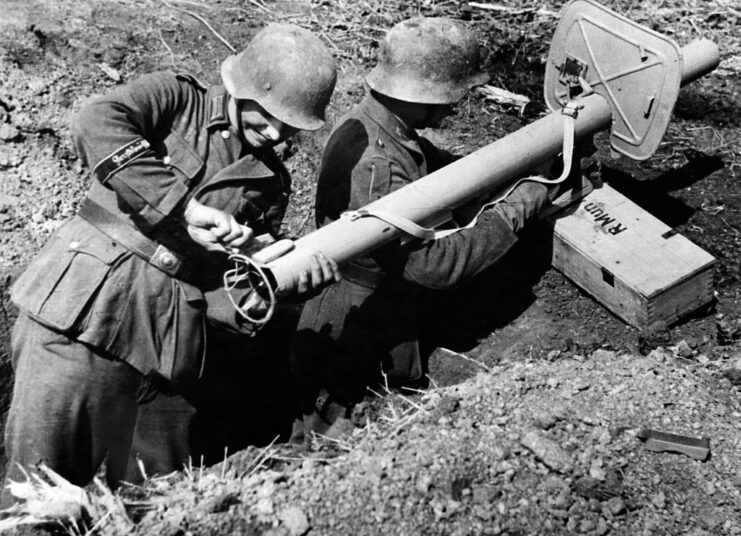
An 88 mm portable anti-tank rocket launcher, the Panzerschreck can be likened to an enlarged and much more potent bazooka. Employed by German infantry, its effectiveness against armored vehicles compelled the Allies to devise novel strategies to shield their tanks from enemy explosions.
Introduced into service as late as 1943, anti-tank teams wielded the Panzerschreck during the Battle of Normandy, achieving devastating outcomes.
Walther P38
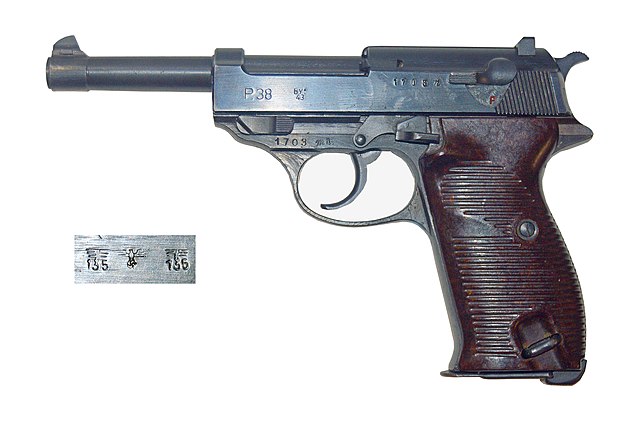
The 9 mm Walther P38 served as the primary pistol for the Wehrmacht during WWII and was designed to be a cost-effective alternative to the more intricate and expensive Luger P08. Functioning as a semi-automatic weapon, it proved to be relatively user-friendly, earning praise for its reliability from the majority of troops stationed on the Eastern Front.
As the standard service pistol for the German Army, it comes as no surprise that soldiers equipped the Walther P38 on D-Day. While records vary regarding the total wartime manufacturing, an estimated 1.2 million units are believed to have rolled off the production line.
Naval guns
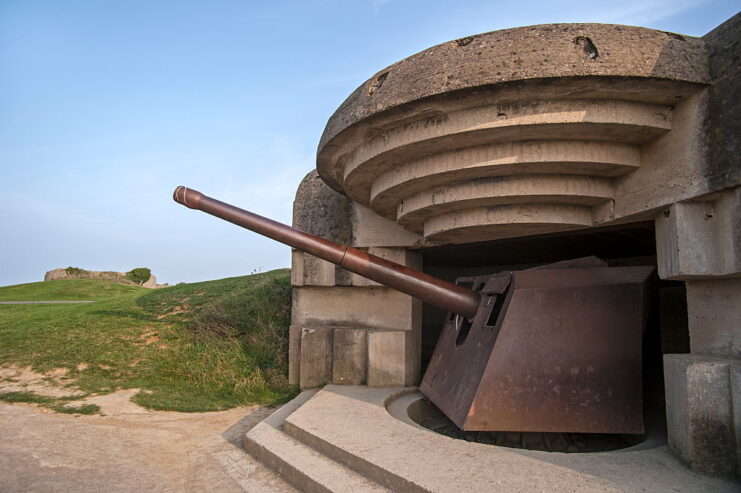
Stretching along the Atlantic Wall were concrete casemates housing naval guns of diverse sizes and calibers. Those positioned along the Normandy coast were strategically placed to thwart any effective seaborne assault by the Allies. To safeguard against attacks from the water, these guns were positioned farther inland, away from the shore.
Although these coastal guns proved effective in inflicting heavy casualties and destroying Allied watercraft, they were ultimately unsuccessful in preventing the forces involved in the landings from advancing into France.
Once ashore, they encountered German ground troops.
Nebelwerfer 42
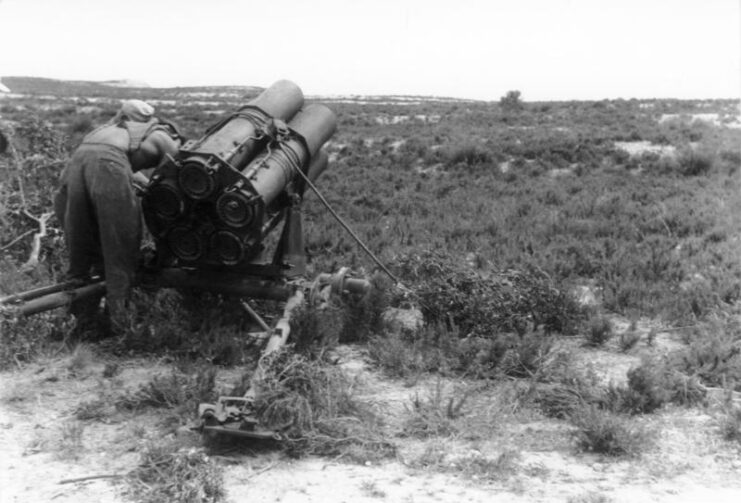
Initially starting life as a series of mortars, the German Nebelwefer developed into a weapon capable of launching rockets. The one to see use on D-Day was the 42, which came in two sizes: 21 cm and 30 cm. The former had a range of 7,850 meters and was primarily used by ground troops. That being said, it was also adopted by the Luftwaffe (under the name Werfer-Granate 21) for use against Allied bomber formations.
The 30-cm Nebelwefer 42, while effective, saw far less use than the smaller variant.
Flammenwerfer 41
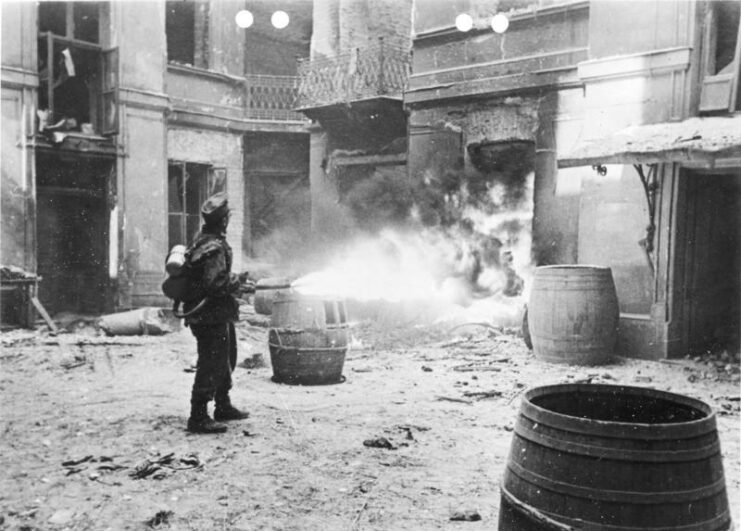
The standard German flamethrower during the Second World War, the Flammenwerfer 41 was generally tasked with clearing out Allied trenches and strongholds. Using a mixture of gasoline and tar known as “Flammöl 19,” it proved to be much more effective in Western Europe than in the East, as the cold weather negatively impacted the weapon’s lighting mechanism.
Given its extensive use in Western Europe, it’s no surprise Germans troops used the Flammenwerfer 41 throughout the Battle of Normandy. With an effective range of 32 meters, it allowed soldiers to attack enemy combatants without getting too close.
StG 44
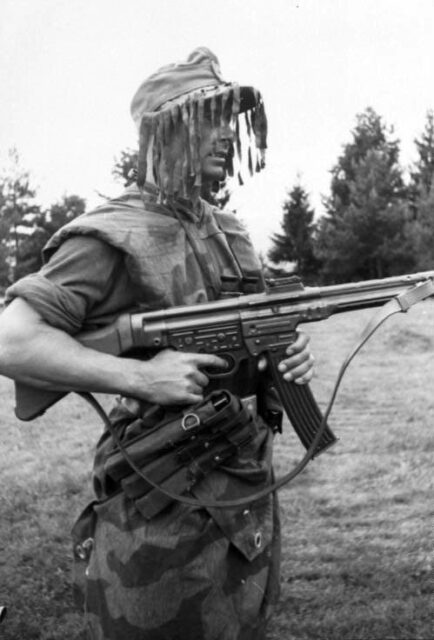
The Sturmgewehr 44 – typically shortened to StG 44 – was a WWII-era German assault rifle. The first successful weapon of its kind, the rifle was known for its increased rate of fire, which made it a particularly lethal opponent. What made it a favorite among ground troops was that it served two purposes; it could be used as a single-shot rifle or as a submachine gun, making it effective in several environments.
Along with making a memorable appearance during the Battle of Normandy, the StG 44 was also used to great effect during the Battle of the Bulge. What’s more, the weapon actually served as the inspiration for the Soviet-produced AK-47.
Goliath tracked mines
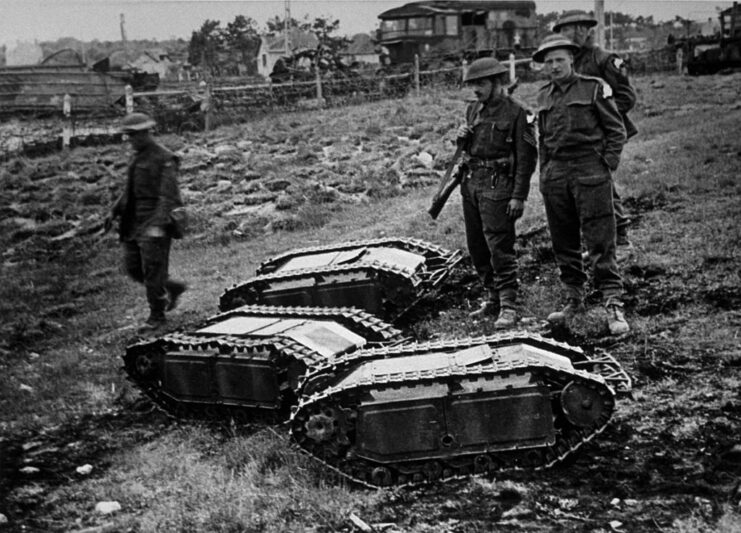
An unusual sight on the battlefield, the Goliath was a tracked ground mine used by the Germans to inflict explosive damage on Allied positions and structures. Typically equipped with between 60 kg and 100 kg of explosives, the unmanned vehicles, known as “Beetle Tanks” by the Allies, were developed to be single-use.
Goliath tracked mines were found by the Allies on the D-Day landing beaches. While the Germans had intended to use them against the invading forces, Allied fire had severed their command cables, essentially rendering the vehicles useless.
Panzerfaust
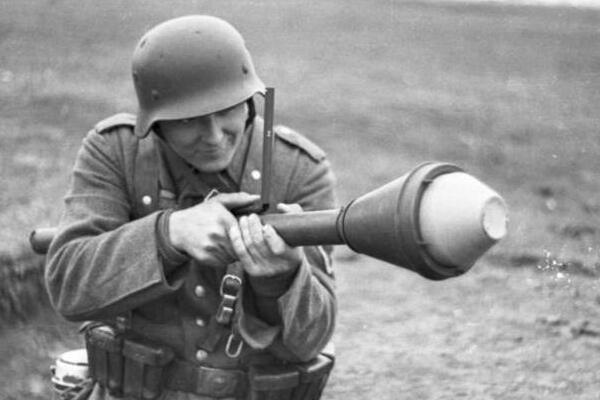
The first single-use light anti-tank weapon, the German Panzerfaust was part of the defensive measures used on D-Day. Known as the “armored fist of Germany,” it was a powerful device that packed a lethal punch against targets, making it a feared weapon on the battlefield – more so against people than tanks.
More from us: Leichtgeschütz 40: Germany’s Powerful World War II-Era Recoilless Gun
Out of all the tanks that were destroyed by the Germans during the Battle of Normandy, only around six percent were attributed to the Panzerfaust. That being said, this percentage increased as the war progressed, particularly in urban settings.
